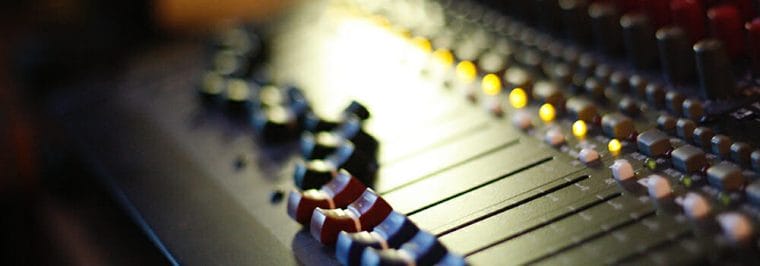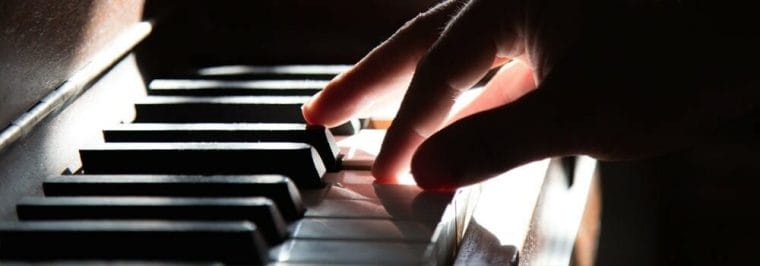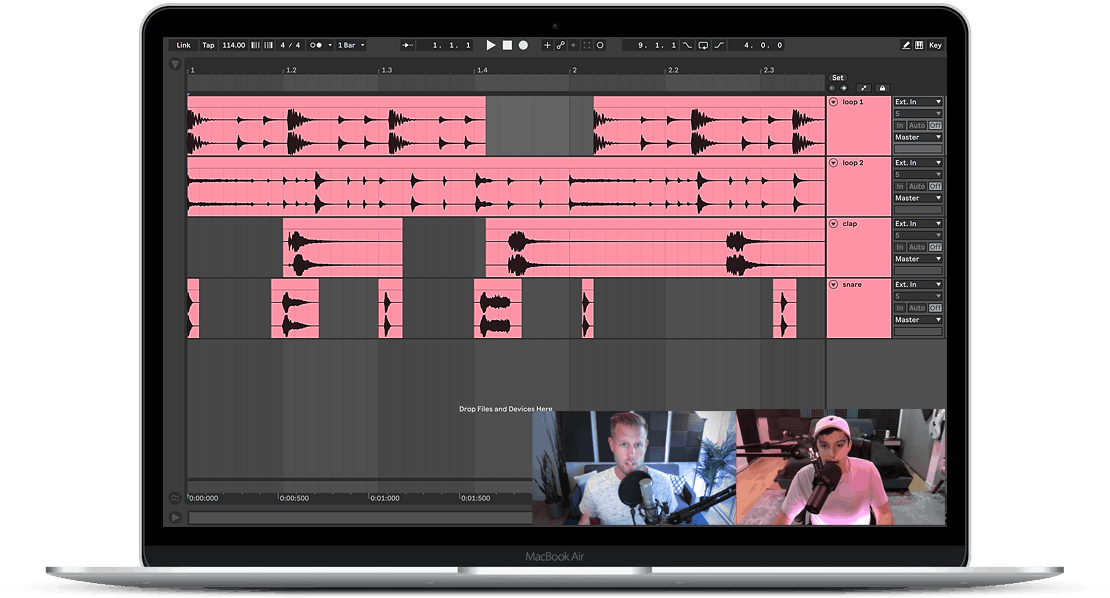Ultimate Guide to Layering & Humanizing Pianos in Electronic Music
“The piano keys are black and white, but they sound like a million colors in your mind.”
— Maria Cristina Mena
In the world of modern electronic music production, it is critical to introduce more organic and timeless sounds into your music.
Electronic music, by nature, is digital.
And when things get overly digital, productions sound flat, predictable, even boring.
But that doesn’t mean we have to limit our productions to only digital sounds.
In fact, using organic instruments (or at the very least, emulations of organic instruments) is one of the best ways to generate some much needed analogue warmth and timbre in your music.
Pianos, somewhat obviously, are an extremely valuable tool to any producer looking to create a familiar and commercially viable song.
However, we all know how damn hard it can be to get that organic piano sound we all hear in professional mixes.
In this post, we are going to demystify exactly that - how to get a professional piano sound through proper layering, processing chains and humanization.
Which Pianos Do I Choose?
With hundreds of piano libraries out there, it has never been easier to get a great sounding piano tone without the need for a fancy studio and a $3000 grand piano.
Below is a breakdown of what we have come across as some of the best sounding piano samplers today.
Every piano library has something special about it and yields a specific tone and purpose.
- The Giant: Great cinematic sound
- Alicia's Keys: Amazing pop record tone
- The Grandeur: Brilliant low end warmth
- Steinway Piano: Logic’s best piano, well-rounded sound
- Korg M1: Classic deep house sound
- Waves Electric 88: Crazy cool Rhodes sounds
- TruePianos: Perhaps the most clean & organic pianos here
- Nexus Pianos: Our favorite presets are the Ballad Grand Piano (nice organic piano), the Dance Piano 2K7 (mimics Korg M1 nicely) and Ibiza (this, is esssentially Avicii’s piano)
By no means is this list comprehensive, but that’s exactly the point - these are our hand-selected, absolute favorite pianos.
You know, the stuff we actually reach for every time we work on a track.
Why Should We Layer Pianos?
Despite the fact that each of the pianos mentioned above is a solid choice for your music, they all tend to have certain weak points as well.
These weaknesses can be heard in a variety of ways: from the actual tone itself, to the fullness of the frequency spectrum, it is often necessary to layer multiple pianos to obtain that rich and full, modern sound.
Organic Pianos
When it comes to frequency, for instance, Kontakt pianos like Alicias Keys and the Grandeur are really frequency dependent. Alicias Keys has nice high-mids but lacks low-end weight and power. The Grandeur has tremendous low end but almost no definition in the upper register.
Separately, these pianos usually fall a bit short, but together, they create a lush and full spectrum of sound that can carry its weight in modern electronic productions with little to no processing necessary.
Synthetic Pianos
Sometimes, though - it’s all about tone.
Nexus, Steinway, and Waves are all much more synthetic sounding than the Kontakt pianos mentioned above. Synthetic pianos (because of their envelope) can have significantly more attack and bite, so they are great to use in more upbeat dance music.
That said, it often helps to layer very synthetic sounds with more organic and real tones. This layering process creates a much fuller sound and brings a unique flavor to your pianos.
In short, by layering - you achieve that digital presence with the analogue warmth. And that is a beautiful combination...
Layering Techniques Made Simple
If you’re reading this and thinking - hey, this is great and all, but how do we go about layering pianos in practice? How do I know which 2-3 pianos I should layer together? When do I need to do this?
Layering pianos can be broken down into these simple methods…
- Frequency splitting
- Stereo spacing and panning
- Compression levels
Frequency Splitting
By determining which pianos sounds better in the lows, mids, and highs, you can utilize that specific piano for only that frequency layer.
Hesitant? Having trouble identifying frequency bands? Try using a frequency analyzer in addition to using your ears. This can often help you determine which pianos are ripe in certain frequency areas.
Stereo spacing
Stereo spacing can be used to make sure your piano mix isn’t conflicting, or worse, masking.
The truth is, most piano libraries are created by recording real pianos. When they mic and record these pianos, it is common to have the sound travel from left to right (or low to high).
You can take advantage of this because most pianos have the ability to switch this direction. This means one layer could move from left to right while the other layer does the opposite. You can kiss frequency clashing, masking, and phasing goodbye.
On top of that, simple panning can also add various benefits, like thickening a piano, making it wider or even just a perceived tonal difference.
Compression
Compression for layering? Really? Just try it
One overly compressed piano layered with a dry dynamic piano can result in added punch and clarity.
But don’t just try one of these layering techniques, a combination of all three is usually the way to go.
How Do We Process These Layers?
We could write a whole separate blog post on ways to process piano groups, but to simplify the process we’ve broken it down into 4 easy steps…
- EQ to sculpt
- EQ to emphasize
- Glue compression
- Single Reverb
Equalization
EQ should be used to sculpt parts of the spectrum where your pianos could be building up in frequency content. Look for muddiness around 2-400 Hz and harshness from 2-8 kHz.
On top of that, EQ can also be used to emphasize certain sweet spots of your layers. Maybe your high-end piano sounds nice with a 1 dB boost around 750 Hz. Try boosting it there and then cutting the same spot in another piano layer.
Glue compression
In small amounts, compression can help gel multiple instruments and aid in creating one, pumping sound.
For pianos, try medium to long attack times and quicker release times with a softer knee to have subtle compression take place. No more than 2-4 dB of gain reduction with a ratio 2:1 works well here, but don’t be afraid to experiment!
For some added coloration, attack, pop, and yes, some compression as well - try playing with the depth knob of the OTT compressor.
At the end of the day, peanut butter is to jelly as the OTT Compressor is to pianos.
Reverb
One of the best ways to get your pianos to merge into one super piano is to apply a group reverb to them. Having one nice reverb on the group can do a nice job placing the pianos in the same space.
There isn’t really one type of reverb you should use here, but make sure to experiment with decay times and the types of reverb used.
How to Humanize Pianos
In a digital production, your piano is only as good as how real the performance sounds.
Try changing up the velocity of different notes in your chord progression or melody. This will make the piano breath a lot more and let your composition sound much more human. If you’re a Logic user, the humanize function is a big help here (new to logic? Start here)
Bonus: Velocity also drastically changes the tone of your piano. Experiment with lower velocities to warm up the piano tone.
Note Timing
The timing of when notes start can also help, big time.
If you tend to draw in MIDI notes right on the grid you might want to change up some of the quantization of your notes. Try turning off the grid and sliding notes early and late in time.
Pedals
Pedals are also very valuable tools for any of you piano players out there. You can often assign this to the MOD wheel of most software pianos too! Using a pedal will allow your piano part to go in and out of longer release times and create a much more pleasant sounding flow.
Release
Using release variation can really help to allow the piano samples to shine through the mix and feel as if they were recorded and not just sampled.
Delay
Adding some tasteful delay can really fill up the sound of your piano, help to create an amazingly rich atmosphere and help with humanization.
Final Thoughts On Layering Pianos
Layering organic and synthetic pianos is truly the ultimate solution to solving the naturally occurring faults and weak-spots we tend to find in most piano plugins. Often times, the world of layering can lead to extremely convoluted and frankly, bad advice.
Hopefully this article has not only cleared up a lot of the mystery in working with pianos, but has inspired you to tackle piano production with some level of creativity and confidence.







